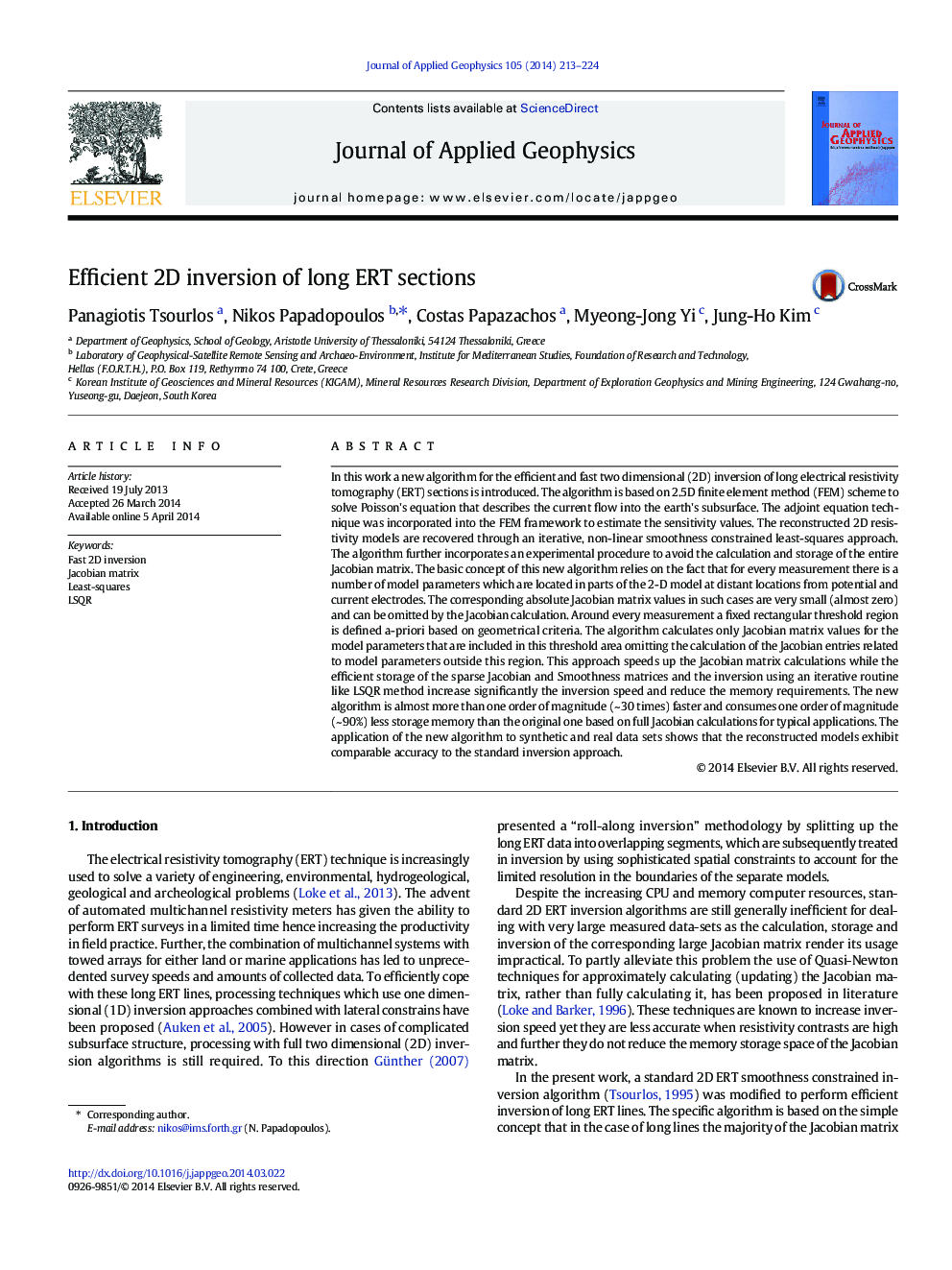| کد مقاله | کد نشریه | سال انتشار | مقاله انگلیسی | نسخه تمام متن |
|---|---|---|---|---|
| 4740170 | 1641146 | 2014 | 12 صفحه PDF | دانلود رایگان |

• Long electrical resistivity tomography (ERT) sections
• Algorithm development for the Efficient 2D resistivity inversion
• Finite element method, Jacobian matrix, least-squares inversion, LSQR
• Inversion acceleration and computer memory reduction
• Evaluation of the algorithm in synthetic and real examples
In this work a new algorithm for the efficient and fast two dimensional (2D) inversion of long electrical resistivity tomography (ERT) sections is introduced. The algorithm is based on 2.5D finite element method (FEM) scheme to solve Poisson's equation that describes the current flow into the earth's subsurface. The adjoint equation technique was incorporated into the FEM framework to estimate the sensitivity values. The reconstructed 2D resistivity models are recovered through an iterative, non-linear smoothness constrained least-squares approach. The algorithm further incorporates an experimental procedure to avoid the calculation and storage of the entire Jacobian matrix. The basic concept of this new algorithm relies on the fact that for every measurement there is a number of model parameters which are located in parts of the 2-D model at distant locations from potential and current electrodes. The corresponding absolute Jacobian matrix values in such cases are very small (almost zero) and can be omitted by the Jacobian calculation. Around every measurement a fixed rectangular threshold region is defined a-priori based on geometrical criteria. The algorithm calculates only Jacobian matrix values for the model parameters that are included in this threshold area omitting the calculation of the Jacobian entries related to model parameters outside this region. This approach speeds up the Jacobian matrix calculations while the efficient storage of the sparse Jacobian and Smoothness matrices and the inversion using an iterative routine like LSQR method increase significantly the inversion speed and reduce the memory requirements. The new algorithm is almost more than one order of magnitude (~ 30 times) faster and consumes one order of magnitude (~ 90%) less storage memory than the original one based on full Jacobian calculations for typical applications. The application of the new algorithm to synthetic and real data sets shows that the reconstructed models exhibit comparable accuracy to the standard inversion approach.
Journal: Journal of Applied Geophysics - Volume 105, June 2014, Pages 213–224